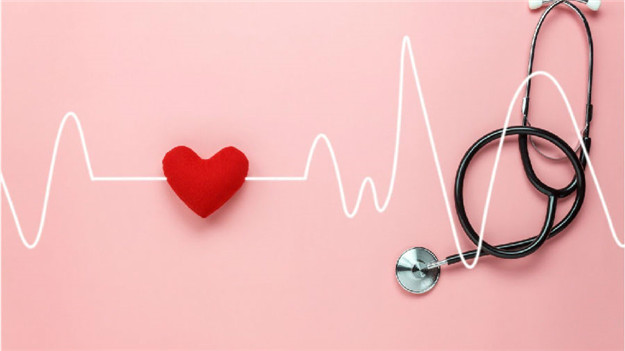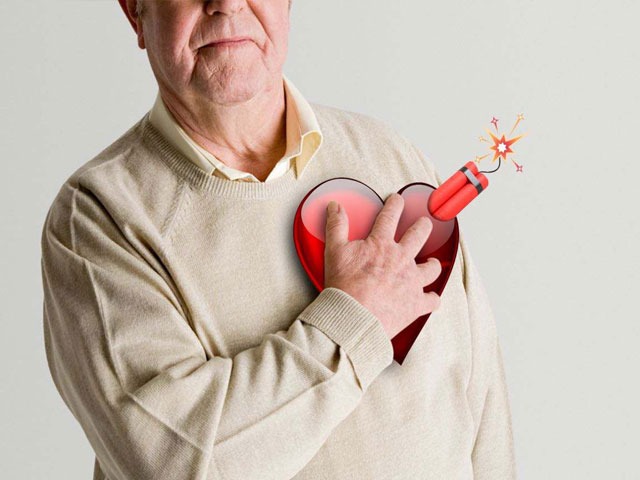您好!欢迎进入北京市中西医结合医院!
官方微信
地 址:北京市海淀区永定路东街3号(本院区)
邮 箱:zxyxck@163.com
24小时服务热线:13521828421
版权所有:北京中西医结合医院 备案号:京ICP备12006550号-1 中企动力 北京
健康科普
秋冬季节,请注意心血管疾病
【摘要】:
漫天黄叶渐落,天气变化较快,又到了心血管疾病高发的季节,请各位跟随小编一起来了解和预防心血管疾病吧。

秋冬季节心血管疾病高发,这是什么原因导致的?
环境变化常常引起心血管疾病发作,其中,秋冬季节的温度变化是最主要因素之一。多项研究证实,温度短期下降与我国心血管疾病发作明显相关:急剧变化的温度可对心率、血压、胆固醇水平、炎症反应及免疫能力产生不良影响,当超出人体自身调节能力时可引发或加重心血管疾病[1-4]。空气污染是心血管疾病发作的另一个危险因素。秋冬季空气污染加重,人们暴露于PM10、PM2.5、PM1、一氧化碳、二氧化硫等污染物的几率增大,也进一步增加心血管病发病风险[5-8]。此外,秋冬季节因风雪寒冷等天气原因,日常体力活动减少,有氧运动预防心血管疾病的作用不能很好发作,也促进了心血管疾病的发作[9,10]。
哪些人群应对心血管疾病引起重视?

相对于年轻人,老年人更容易受温度等环境变化影响,与其对体温的调节能力下降及因罹患各种慢性疾病导致机体稳态的维持能力不足有关。对于既往诊断过心血管疾病的患者,应注意预防再次发作,以避免进一步损害心血管系统结果和功能、加重病情。对于新诊断心血管疾病的患者,应注意调整可逆因素的基础上规范药物治疗。对于存在心血管疾病多种危险因素的健康人群应积极去除危险因素,改善生活方式及精神、心理状态。
秋冬季节应如何预防心血管疾病发作?
《黄帝内经》讲:秋三月,此谓容平。天气以急,地气以明,早卧早起,与鸡俱兴,使志安宁,以缓秋刑,收敛神气,使秋气平,无外其志,使肺气清,此秋气之应,养收之道也。冬三月,此谓闭藏。水冰地坼,无扰乎阳,早卧晚起,必待日光,使志若伏若匿,若有私意,若已有得,去寒就温,无泄皮肤,使气亟夺,此冬气之应,养藏之道也。可见秋冬季节应以收、藏为主,注意保暖防寒,适量活动、避免剧烈运动,同时应改善空气质量,当然也需要规律服用治疗药物[11]。
参考文献:
[1] Tian Y, Liu H, Si Y, et al. Association between temperature variability and daily hospital admissions for cause-specific cardiovascular disease in urban China: A national time-series study[J]. PLoS Med, 2019,16(1):e1002738.
[2] Jie Y, Houjin H, Mengxue Y, et al. A time series analysis of meteorological factors and hospital outpatient admissions for cardiovascular disease in the Northern district of Guizhou Province, China[J]. Braz J Med Biol Res, 2014,47(8):689-696.
[3] Yang J, Zhou M, Li M, et al. Vulnerability to the impact of temperature variability on mortality in 31 major Chinese cities[J]. Environ Pollut, 2018,239:631-637.
[4] Guo Y, Ma Y, Ji J, et al. The relationship between extreme temperature and emergency incidences: a time series analysis in Shenzhen, China[J]. Environ Sci Pollut Res Int, 2018,25(36):36239-36255.
[5] Lu F, Li CC, Li YW, et al. [Meta-analysis of the association between the short-term exposure to fine particular matter and the morbidity of ischemic heart disease][J]. Zhonghua Yu Fang Yi Xue Za Zhi, 2019,53(11):1152-1157.
[6] Tan F, Wang W, Qi S, et al. Air pollutants and outpatient visits for cardiovascular disease in a severe haze-fog city: Shijiazhuang, China[J]. BMC Public Health, 2019,19(1):1366.
[7] Fan F, Wang S, Zhang Y, et al. Acute Effects of High-Level PM2.5 Exposure on Central Blood Pressure[J]. Hypertension, 2019:HYPERTENSIONAHA11913408.
[8] Xia SY, Huang DS, Jia H, et al. Relationship between atmospheric pollutants and risk of death caused by cardiovascular and respiratory diseases and malignant tumors in Shenyang, China, from 2013 to 2016: an ecological research[J]. Chin Med J (Engl), 2019,132(19):2269-2277.
[9] Sinharay R, Gong J, Barratt B, et al. Respiratory and cardiovascular responses to walking down a traffic-polluted road compared with walking in a traffic-free area in participants aged 60 years and older with chronic lung or heart disease and age-matched healthy controls: a randomised, crossover study[J]. Lancet, 2018,391(10118):339-349.
[10] Yang BY, Guo Y, Morawska L, et al. Ambient PM1 air pollution and cardiovascular disease prevalence: Insights from the 33 Communities Chinese Health Study[J]. Environ Int, 2019,123:310-317.
[11] Chen R, Zhao A, Chen H, et al. Cardiopulmonary benefits of reducing indoor particles of outdoor origin: a randomized, double-blind crossover trial of air purifiers[J]. J Am Coll Cardiol, 2015,65(21):2279-2287.
上一篇:
我在你面前你却忘了我是谁——阿尔茨海默病
秋冬季节,请注意心血管疾病
下一篇:






